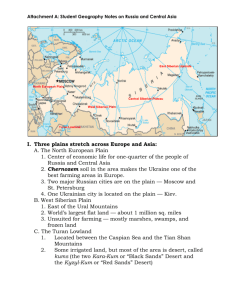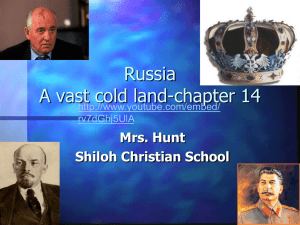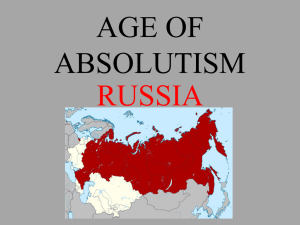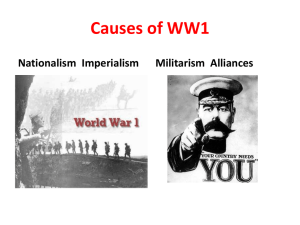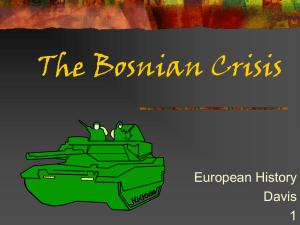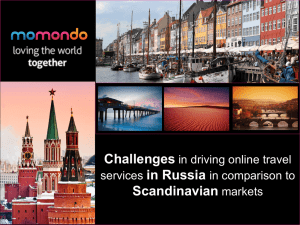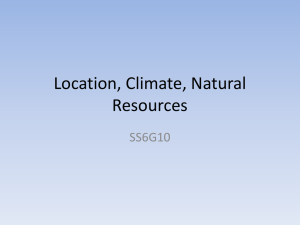Physical Geography of Russia Chapter 14
advertisement
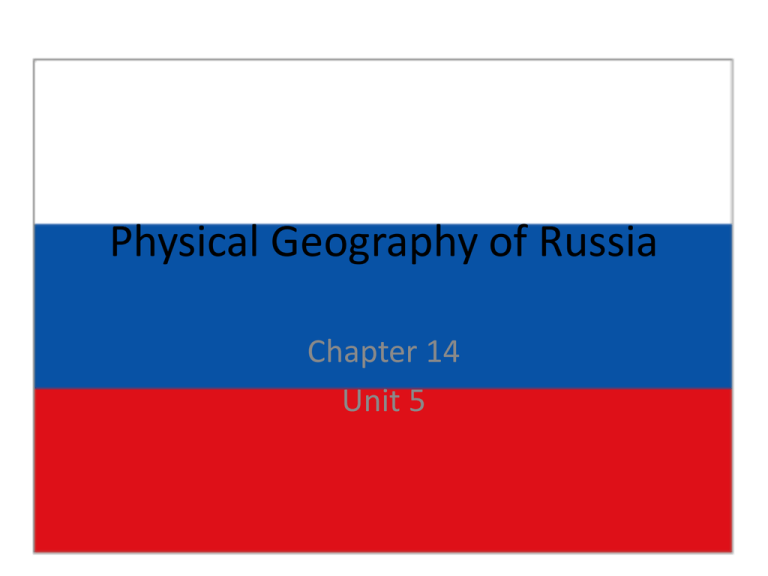
Physical Geography of Russia Chapter 14 Unit 5 A Vast and Varied Land • Russia stretches across parts of Europe and Asia. • Russia is a huge land of plains divided and bordered by mountains and plateaus. • Urals- old, worn-down mountains that mark the boundary between European and Asian parts of Russia. • Caucasus Mountains- southwest of Russia, reach their highest point at Mount Elbrus, 18,510 ft. • Mountain ranges also form a rugged natural boundary between Russia and China. http://coloradomountainclub.blogspot.com/2010/06/r Vast and Varied Land • North European Plain covers most of European Russia. – 75 % of Russian population lives in the southern part of this plain. – West Siberian Plain- covers almost 1 million square miles. Russia has the longest continuous coastline of any country, at 23,400 miles. Most Russian ports are frozen for at least part of the year. Lake Baikal- deepest freshwater lake in the world- located in southern Siberia. (20% of Earth’s freshwater) A. Black Sea- Russia’s warm water outlet to the Mediterranean Sea B. Caspian Sea- actually a saltwater lake with no outlet. Lake Baikal * It is 6,365 feet deep. It has characteristics common to both seas and lakes. It is one of the world's smallest seas It is also one of the world’s largest lakes. It is 152,085 square feet. Caspian Sea http://www.ceoe.ud el.edu/blacksea/che mistry/jellyfish.html http://www.esa.int/esaEO/SEM5GYTLWFE_index_1.html Rivers • Most of Russia’s longest rivers are in sparsely populated Siberia. Siberians enjoy a surplus of freshwater, but European Russians often face water shortages or problems with water quality. A. Volga River- 4th longest river in Russia. Drains much of N. European Plain and links Moscow to the Caspian, Black, and Baltic Seas. B. Siberian Rivers- flow north to the Arctic Ocean. Blocked by ice, meltwaters often flood the land and create vast swamps. Siberian Rivers Natural Resources • Huge mineral resources: mineral fuels such as oil, natural gas, and coal. • Rivers make Russia a leading hydroelectric power. • Because of generally cold climate, only about 10% of Russia’s land is suitable for farming. • “Black Earth Belt”- rich, fertile area stretches from Ukraine to southwestern Russia- supplies grains, sugar beets, and other produce. • 1/5 of the world’s forested land is in Siberia. Russian forests supply much of the world’s timber. • Fish is a staple food, and also an important export. http://www.wealthdaily.com/articles/top-five-russian-goldstocks/2709 Russia’s Climate and Vegetation Most of Russia has a harsh climate with long, cold winters and short, relatively cool summers. A. Tundra- vast, treeless plain that covers about 10 % of Russia. Always cold, little growth. B. Subarctic- south of the tundra. Snow for up to 250 days of the year. - Taiga- forest belt in the subarctic that is the world’s largest coniferous forest. Contains ½ of the world’s softwood timber. C. Russians are creative when living in an extremely cold climate. Builders plan for cold when they construct buildings, and cars are made from a special type of steel that will not crack in the cold. Large amounts of oil, gas, wood, and coal are used to keep warm Climate and Vegetation History- Russia’s cold climate was helpful in defeating Napoleon in 1812 and the Germans in WWII. (354-355) Humid Continental- most of the North European Plain and some of southern Siberia have a humid continental climate, with long, snowy, relatively mild winters. Ex: Moscow- 9 to 21 degrees in January and 56 to 75 degrees in July. Steppe- dry summers and long, cold, dry winters. Rich soil enables a variety of grasses and plants to flourish.
